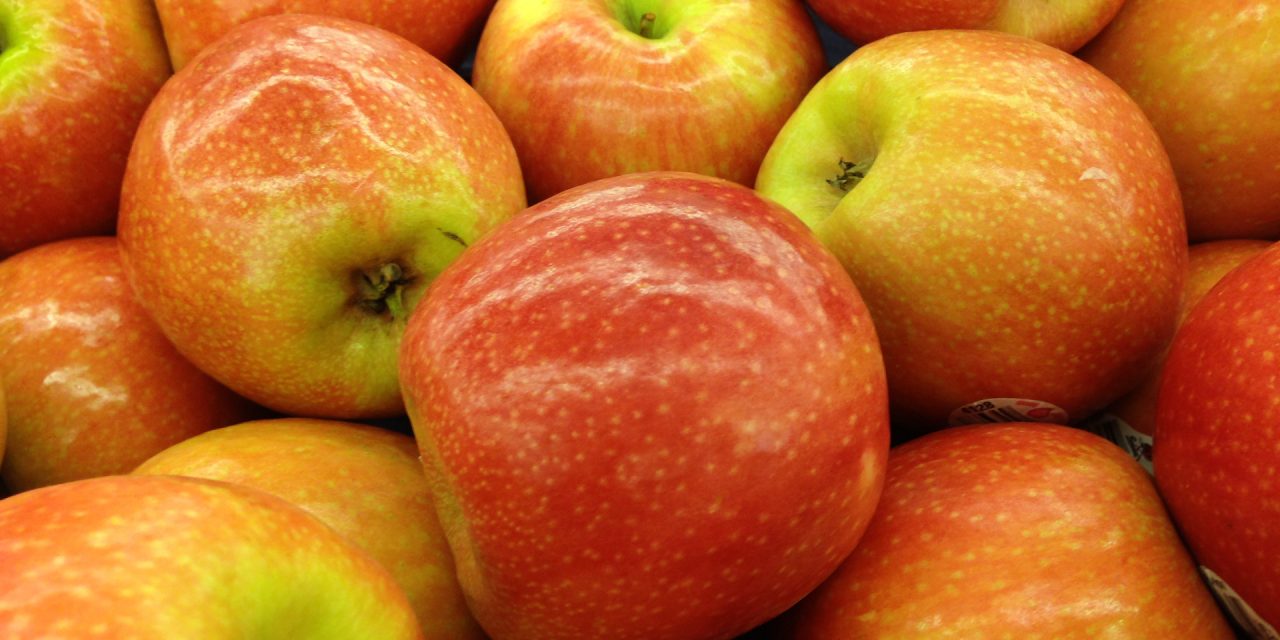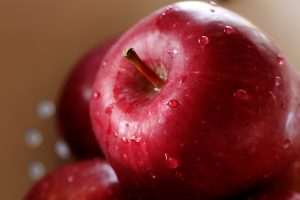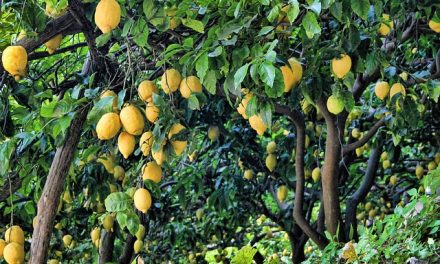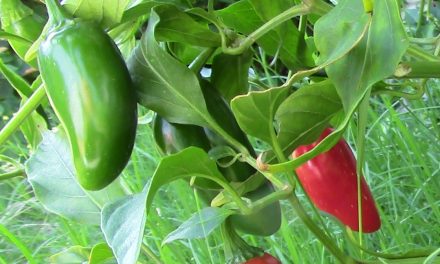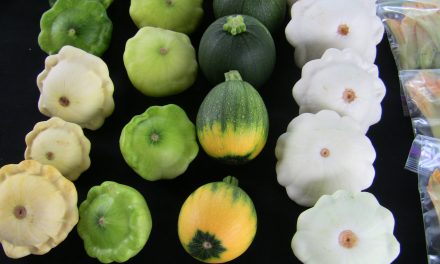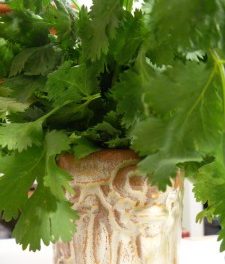Over the next three months apples are in full bloom and while I can get them year round in my market, the fall season is the time they really shine. But what is an apple and where did it come from?
The Traveling Apple
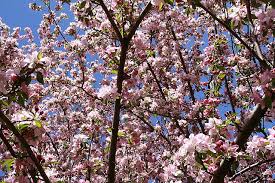
Apples were once tart, bitter, and almost inedible. The tree can be traced back to Kazakhstan and the surrounding area. Apples belong to the Rose family (as well as peaches) and at one time there were over 10,000 varieties of apples. Today there are about 7,000 classified varieties. In the American market we see only a handful of these apples.
Apples don’t grow a consistent fruit. They are a genetically variable plant. The seed can produce very different fruit than its parent. What does this mean? From tree to tree, apples can be very different. Root stalk grafting has been practiced for many centuries and is the way to ensure a stable product. It really is the genius of humans that we continue to have edible apples at all.
The apple traveled from its original home via the Silk Road carried by the traders of the ancient world. They eventually and ended up in the forests of the Mediterranean and Europe. And incorporated into mythology.
The word apple in Ancient Greece meant fruit, or any foreign fruit. Apples are supposedly the original food of sin. Eve tempted Adam with an apple and humans fell from God’s grace, but Christianity doesn’t own the rights to apples in a religious context. Apples figured prominently in both Greek and Norse mythology.
Romans fell in love with the small bitter fruit, and became adept at grafting and growing apples. The apple was consumed daily by the Romans. They carried these fruits to England and other parts of Europe during the conquest of the old world.
The British people adapted the apple into their daily cuisine. When the English Pilgrims journeyed to the New World the apple traveled with them. It was vital in making hard cider. The drink of the new world, hard cider was found anywhere apples were grown.
Myth of a Man
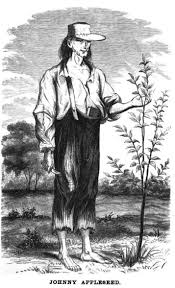 Once firmly rooted in American soil, apples spread from the state of Pennsylvania through to the country side of Ohio, Indiana, and the surrounding territories, mainly through the efforts of one man: John Chapman, otherwise known in American legend as Johnny Appleseed.
Once firmly rooted in American soil, apples spread from the state of Pennsylvania through to the country side of Ohio, Indiana, and the surrounding territories, mainly through the efforts of one man: John Chapman, otherwise known in American legend as Johnny Appleseed.
I grew up with this legend. Appleseed came with all the trimmings of a legend – coffee sack for clothing, barefoot, and a tin pot for a hat. Every year in school we celebrated “Johnny Appleseed” day, September 26th. I found this video that I remember watching in grade school. It was touted as “fact.”
The truth in the research shows that, yes, Appleseed was a real man, not a myth, who learned to be an arborist specializing in apple trees. In the early 1800s, when apples were grown for hard cider, these inedible fruit were called spitters, not fit to be consumed at the table.
Chapman set out to spread apple orchids wherever they would grow so that homesteaders could make cider. The apple that we know today did not come into existence until after these orchards were planted and thriving and producing genetically variant fruit. There were incentives in the territories of the American “West.” Land was being given to those who would homestead (at that time anything west of Pennsylvania) as long as they planted a combination of apple and peach trees. It makes sense that a person could profit from growing these trees and that’s what John Chapman did. He traveled ahead of the homesteaders planting orchards and then sold the trees to the new land owners.
Like other figures of the Old West, Paul Bunyan or Casey Jones, the legend of the man is what I learned, not fact. Teachers didn’t tell us that he was a Swedenborgian or a vegetarian and that he would do no harm to any animal or human, only that he seeded our country with apples. Nor did I learn that in order for apples to reproduce properly, honey bees had to be imported into America from Europe.
An Apple a Day
Apples provide a modest amount of vitamin C, but what they really give is a solid amount of polyphenols, or micro nutrients. Recent studies are showing that apples really do have some incredible health benefits. According to several studies, apples can lower cholesterol and they help regulate blood sugar levels. They are also useful in controlling asthma and are proving beneficial in lung cancer treatments. With high levels of potassium, manganese, magnesium, and calcium, apples help build strong bones and have been shown to be successful in the prevention of osteoporosis.
Most of the nutrients of apples live in the skin. Apples are a crop that are treated regularly with pesticides. The chemicals don’t wash off easily, so while you are ingesting nutrients you are also taking in chemicals. Buying and eating organic apples is a better way to go.
Apples have a long shelf life. If kept in a controlled storage environment with low humidity, they can stay good for up to a year. I’ve been known to pull an apple out of my refrigerator after six months and have that resounding crunch when I bite into it.
Does that mean you should keep your apples as long? Probably not. By the time the apple is bought, especially off-season, it has probably been in storage for six months or longer. Buy in season to assure the freshest possible apple.
Apples are an extremely versatile fruit. They are used in desserts, in alcohol, in production of gelatin (pectin is a thickener). Apples are pressed for juice. We put them in our cereal, our oatmeal, and we give them to our children. They are one of the oldest domesticated fruits in the world, so when you bite into an apple, you are eating history.

